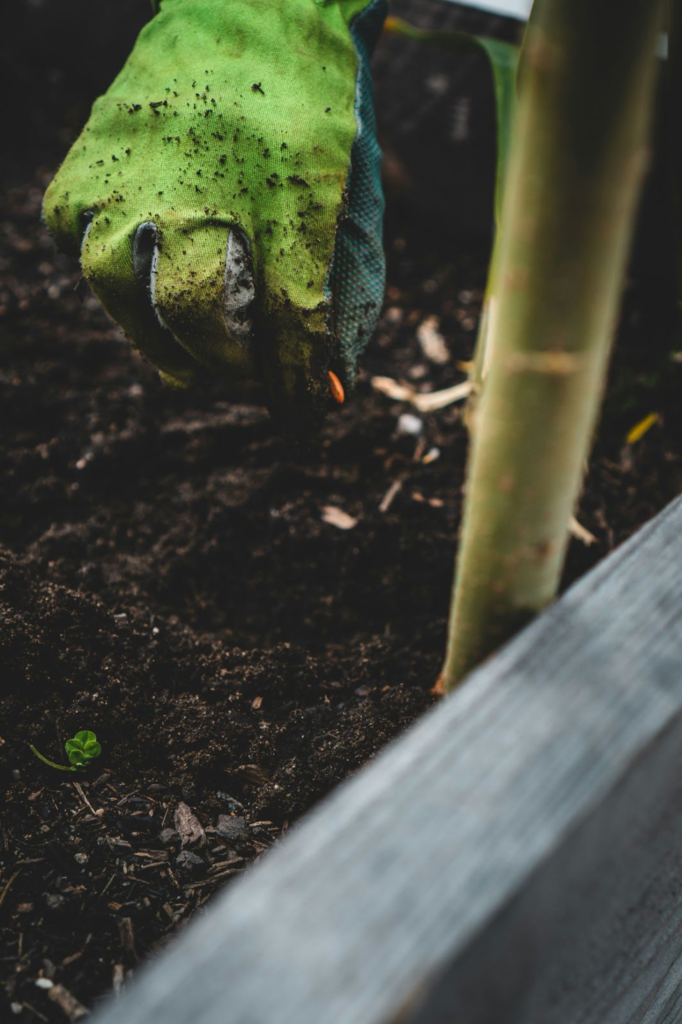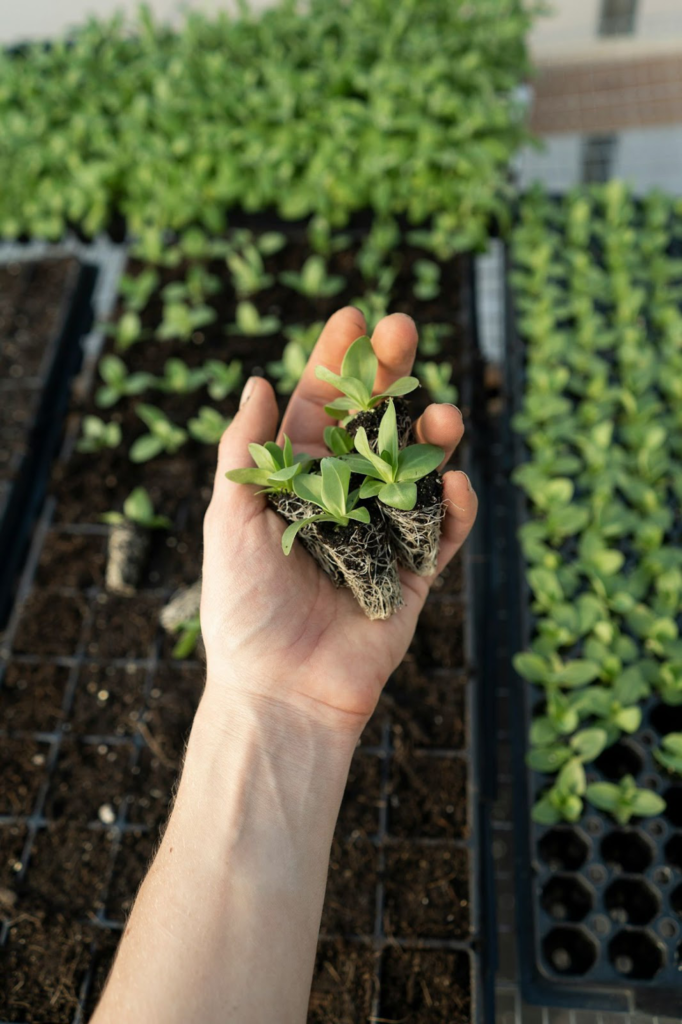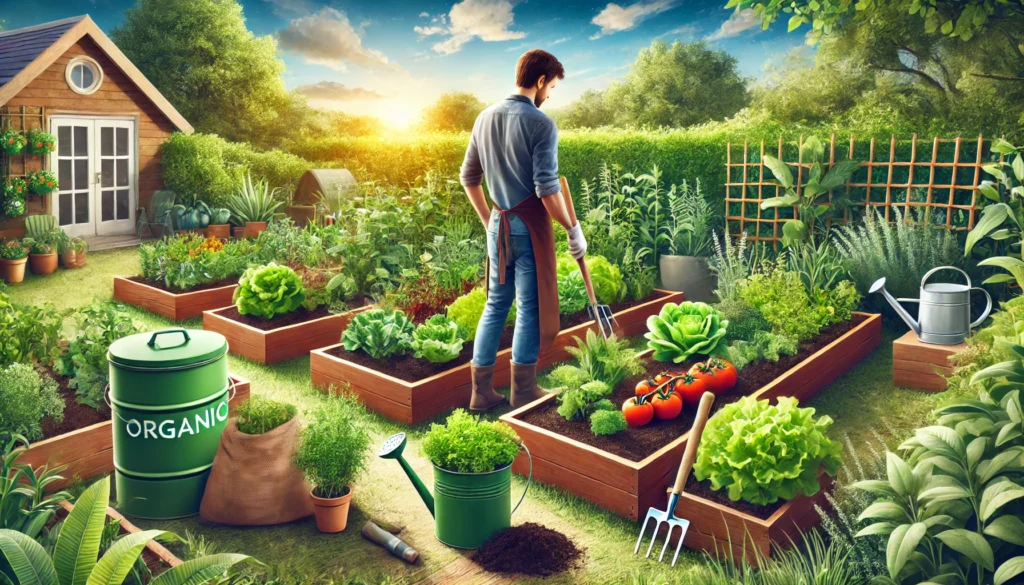In recent years, organic gardening has gained immense popularity among homeowners and gardening enthusiasts. Not only does it promote a healthier environment, but it also produces fresh, chemical-free fruits and vegetables right in your backyard. If you’re new to organic gardening and want to start your own green paradise, this guide will provide you with essential tips, techniques, and insights to get you started.
What is Organic Gardening?
Organic gardening is the practice of growing plants without the use of synthetic fertilizers, pesticides, or genetically modified organisms (GMOs). Instead, organic gardeners rely on natural methods to enhance soil fertility, control pests, and promote plant health. This approach not only benefits your health but also nurtures the ecosystem by encouraging biodiversity.
Benefits of Organic Gardening

- Healthier Produce: Organic fruits and vegetables are grown without harmful chemicals, making them safer for you and your family.
- Environmental Protection: Organic gardening helps reduce pollution from synthetic fertilizers and pesticides, promoting a healthier ecosystem.
- Biodiversity: By creating a diverse garden, you support beneficial insects, birds, and other wildlife, contributing to a balanced environment.
- Sustainable Practices: Organic gardening emphasizes sustainable methods, such as composting and crop rotation, which help maintain soil health and fertility.
Getting Started with Organic Gardening

- Choose the Right Location
- Sunlight: Most vegetables and fruits require at least 6-8 hours of direct sunlight daily. Choose a sunny spot in your yard or garden.
- Accessibility: Make sure your garden is easily accessible for watering, weeding, and harvesting.
- Select Organic Seeds and Plants
- Heirloom Varieties: Look for heirloom seeds, which are open-pollinated and often more flavorful than hybrids.
- Local Nurseries: Purchase plants and seeds from local nurseries that offer organic options. This can help ensure they are well-suited to your climate.
- Prepare Your Soil
- Testing: Conduct a soil test to determine its pH and nutrient levels. Kits are available at garden centers or online.
- Amending: Improve soil quality by adding organic matter, such as compost, well-rotted manure, or leaf mold. This enhances fertility, structure, and drainage.
- Plan Your Garden Layout
- Companion Planting: Group plants that benefit each other together (e.g., tomatoes and basil) to maximize space and deter pests.
- Crop Rotation: Rotate crops each season to prevent soil depletion and reduce pest problems.
- Watering Wisely
- Irrigation: Use drip irrigation or soaker hoses to deliver water directly to the roots, minimizing evaporation and runoff.
- Mulching: Apply a layer of organic mulch (e.g., straw, wood chips) around plants to retain moisture, suppress weeds, and improve soil quality.
- Natural Pest Management
- Beneficial Insects: Encourage beneficial insects like ladybugs and lacewings by planting flowers that attract them (e.g., marigolds and daisies).
- Organic Pesticides: Use natural pest control methods such as neem oil, insecticidal soap, or diatomaceous earth to manage pests without harmful chemicals.
- Weed Control
- Hand Weeding: Regularly check your garden and remove weeds by hand, especially before they set seed.
- Mulch: Besides conserving moisture, mulch helps suppress weeds by blocking sunlight.
- Harvesting
- Timing: Harvest fruits and vegetables at their peak ripeness for the best flavor and nutritional value.
- Techniques: Use sharp scissors or pruners to avoid damaging plants when harvesting.
Maintaining Your Organic Garden

- Regular Monitoring: Keep an eye on plant health, looking for signs of pests or disease, and address issues promptly.
- Seasonal Care: Adapt your gardening practices with the seasons, adjusting watering, mulching, and planting schedules as needed.
- Continuous Learning: Stay informed about organic gardening practices through books, online resources, or local gardening clubs.
Conclusion
Organic gardening is a rewarding and fulfilling way to grow your own food while protecting the environment. By following the tips outlined in this guide, you can create a flourishing organic garden that provides fresh produce for you and your family. Remember, the key to success lies in patience and persistence—every gardener starts somewhere, so enjoy the journey of cultivating your green thumb!

